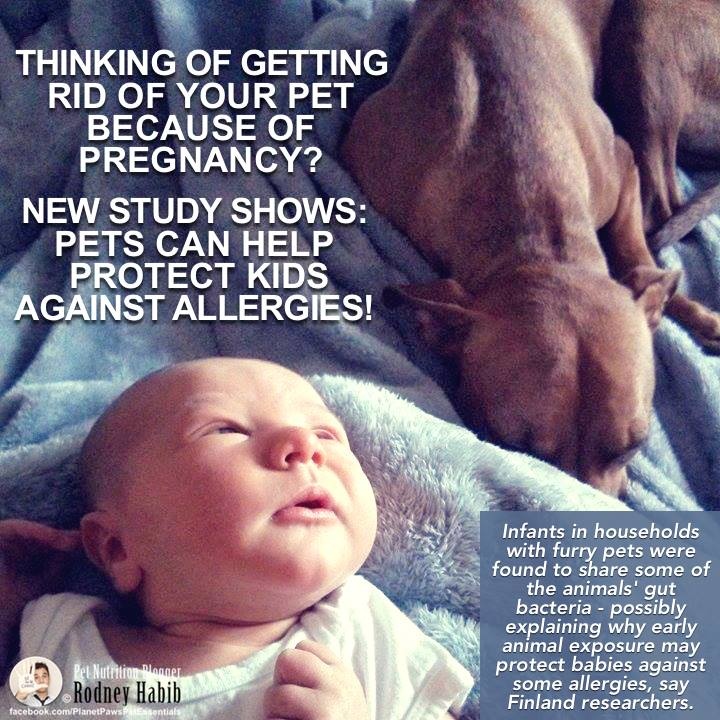
一旦懷孕就要把毛孩送走的觀念可能要所修正了!
根據芬蘭TurKu大學的研究顯示,寵物體內的某些益生菌會傳播至寶寶腸胃道內,可增強寶寶的免疫力、幫助對抗各種類型的過敏,其中也包括了寵物的皮屑和毛髮。
寵物的皮屑和毛髮被認為是造成過敏性疾病的最者要原因之一。這些過敏原可能含有狗貓乾燥的唾液蛋白,因而造成嬰兒免疫系統的過度反應,就是俗稱的過敏反應。
簡單來說,此試驗找來了具有過敏病史的孕婦作為實驗對象,將這些孕婦分為兩組,一組所產下的嬰兒有寵物相伴、另一組則沒有。
在寶寶滿月的時候,利用糞便進行DNA檢測,除了狗狗之外,兩組嬰兒都可測得腸道益生菌,但有寵物相伴的嬰兒檢出率有33%、另一組只有14%。然而,科學家們並無法解釋這些嬰兒是如何獲得益生菌的。
待嬰兒六月齡後,進行皮下的過敏原檢測。科學家們發現,先前被檢測出有腸道益生菌的寶寶並無過敏反應!
所以,在您決定將毛孩拋棄或是送人之前,麻煩再三思考!
FURRY PETS 'ENRICH' GUT BACTERIA OF INFANTS AT RISK FOR ALLERGIES
Sadly, a lot of expecting parents will give away their beloved pet in fear that it will cause allergy symptoms in their newborn. However, new research is saying: hold on a second!
Check out the latest study on the importance of gut bacteria!
"In a small initial study conducted by PhD researchers and doctors of Finland's University of Turku, child and pet comingling increases the likelihood of animal gut bacteria transfer, which will then help increase the immunity of the child against different types of allergens, including pet dander.
Pet dander is considered as one of the most common triggers of allergy diseases. It contains a protein from the dried saliva of dogs and cats that causes the immune system to overreact that can result to the appearance of allergy symptoms.
For the study, Dr. Merja Nermes, one of the authors, and her colleagues wanted to determine the extent of the effects of pet exposure to a child's immune system using an ongoing probiotic study participated by pregnant women who have allergy history. Allergies are assumed to have a genetic predisposition. Children who are born to parents who have allergies are at least 50% likely to develop the condition as well.
Among the pool of participants, they selected 51 women with infants and pets and 64 who have babies but no pets to serve as the control group.
The babies in both groups underwent two types of tests at different times. When they were one month, their DNA was tested for presence of the animal gut bacteria, specifically B. pseudolongnum and B thermophium, using the fecal sample from diapers. When analyzed, 33% of the first group had tested positive of the bacteria while around 14% of the control group had them, although it's unclear how they had obtained the bacteria.
When they turned half year, the researchers conducted a skin prick test to find out which allergies the babies are prone to. More than 15 of the babies had allergic reactions, but for those with B. thermophilum, they didn't have any." -youthhealthmag.com
